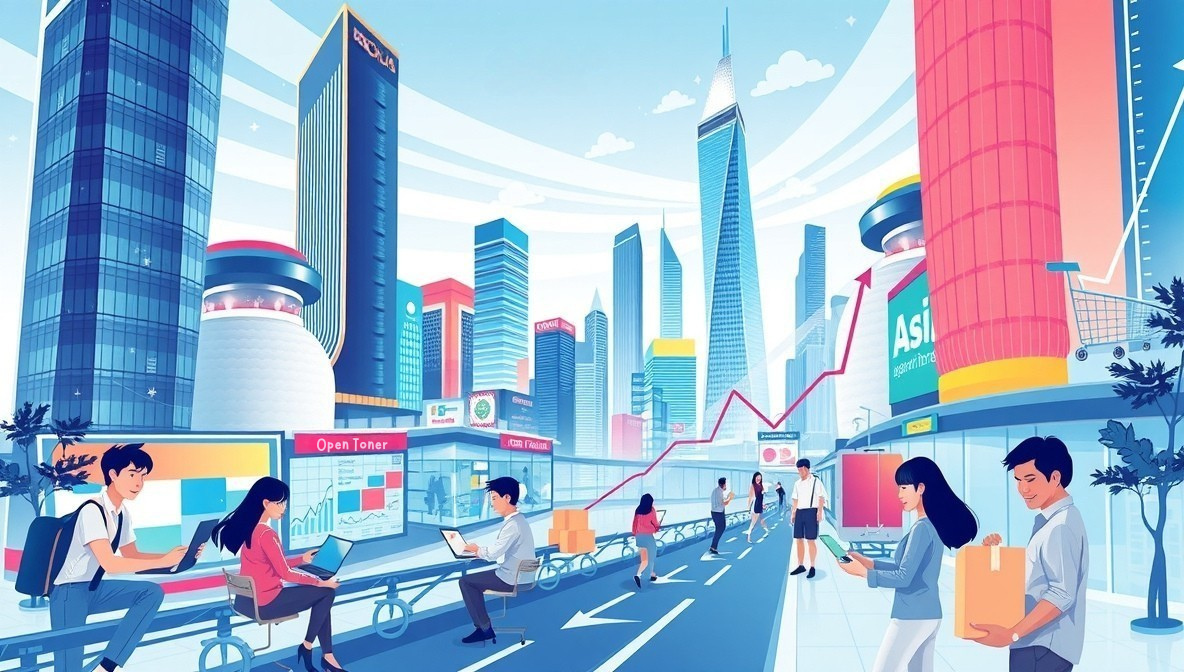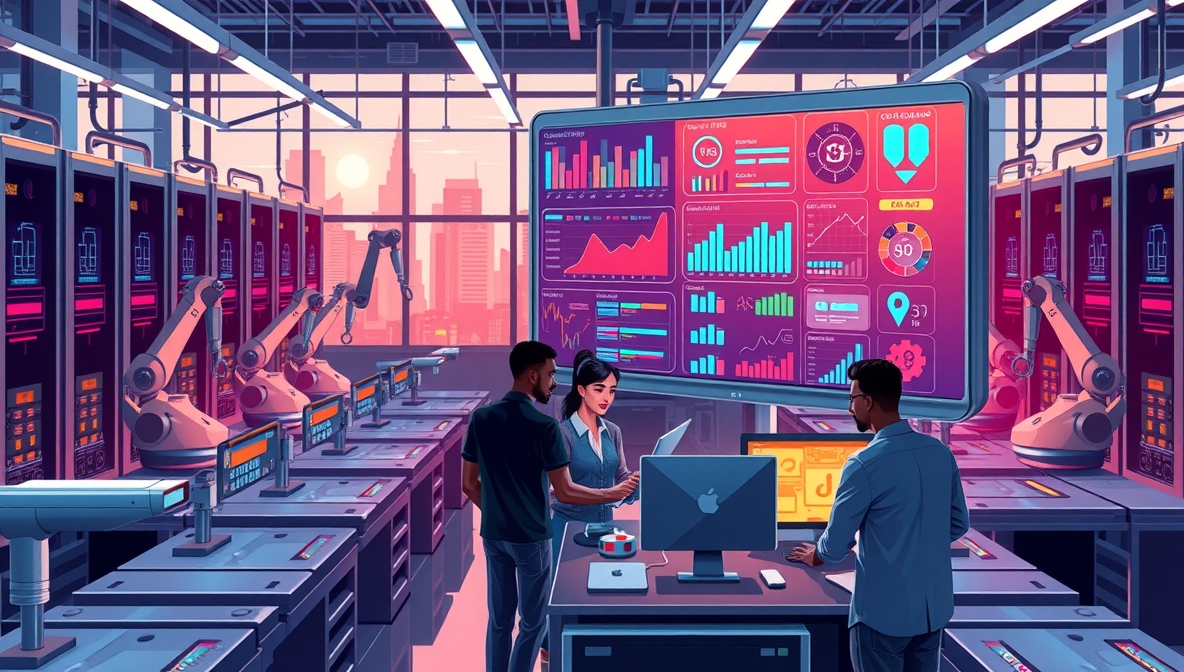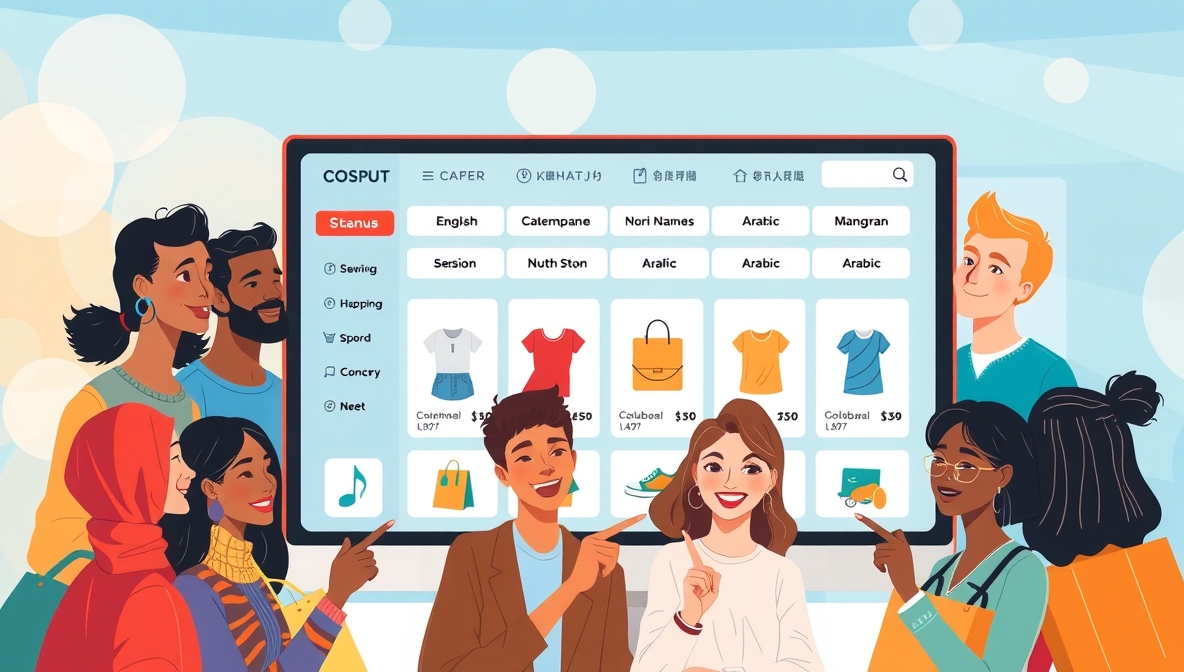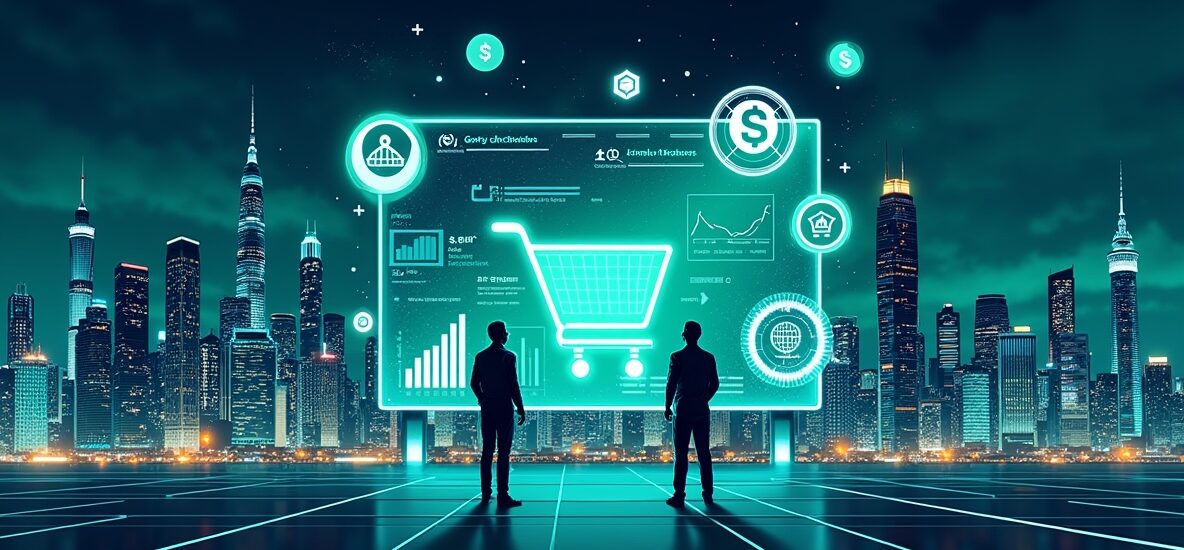Asia’s e-commerce scene is no longer simply “fast-growing” — it’s a runaway bullet train, fueled by one thing above all: data-driven intelligence. The fusion of AI Development Services and AI Marketing has transformed the way businesses connect with customers, cutting through the noise with laser precision. From bustling Jakarta marketplaces to neon-lit Tokyo storefronts, AI is now the invisible architect crafting product descriptions, visuals, and personalized recommendations — all in real time.
What makes this shift truly seismic is scale. We’re not talking about boutique experiments; we’re talking about Alibaba generating millions of product descriptions in seconds, Lazada using AI to predict purchasing intent before you even search, and TikTok Shop blending entertainment with instant buying triggers. In Asia’s cutthroat e-commerce race, content isn’t just king — it’s algorithmically engineered royalty.

The E-Commerce Boom Across Asia – More Than Just Numbers
The numbers are staggering. Vietnam’s online retail market is on track to hit $43 billion by 2025. Southeast Asia’s digital economy will likely surpass $300 billion before the decade ends. But beyond the projections lies a cultural shift: the smartphone is the shopping mall, and checkout happens in as little as two taps.
This transformation is turbocharged by AI, which doesn’t just automate but anticipates. Platforms like Shopee and Lazada are using predictive models to stock, promote, and discount products before a human buyer even realizes the demand is peaking. AI Marketing strategies embedded in these platforms are making regional campaigns hyper-local — a sneaker ad in Bangkok looks nothing like the same campaign in Manila, even if it’s selling the same shoe.

AI-Powered Content – The New Factory Floor of E-Commerce
Forget warehouses and shipping docks — in Asia’s e-commerce hubs, the most valuable factory floor is digital. AI Development Services are powering content assembly lines capable of producing thousands of optimized, multilingual product descriptions, images, and videos without human bottlenecks.
Alibaba’s AI engines, for instance, can generate ad copy so precise that conversion rates spike within hours of deployment. JD.com’s automated product copywriting tools slash manual labor costs and speed up catalog updates. AI visual generators now create lifestyle photos and product demos without expensive shoots — perfect for the fast-moving, trend-hungry Asian consumer.
For brands, this is more than efficiency; it’s survival. In markets where price wars are fierce and consumer loyalty is fragile, AI-generated content is the edge that decides whether you trend on the homepage or vanish into the scroll abyss.

Giants of AI – Infrastructure and Influence
When giants move, the ground shakes. Alibaba is pouring billions into AI infrastructure, building new data centers in Malaysia and the Philippines to power localized services. Tencent and Baidu are doubling down on proprietary AI tools fine-tuned for regional languages, slang, and cultural nuances.
Meanwhile, Southeast Asia’s homegrown innovators are building AI platforms specifically designed for mobile-first commerce. This ecosystem of massive infrastructure and nimble startups creates an AI arms race — where speed, adaptability, and cultural alignment determine who dominates.
For AI Marketing agencies, this is the golden era. The combination of robust AI Development Services and localized data insights allows for campaigns that speak directly to the consumer’s habits, desires, and unspoken triggers.

Personalization & Multilingual Mastery – Speaking to Every Shopper
Asia isn’t one market; it’s hundreds of intertwined micro-markets, each with its own language, idioms, and buying behaviors. AI is the translator, negotiator, and personal shopper all at once.
From Lazada’s LazzieChat to Naver’s HyperCLOVA X, chatbots and AI assistants are delivering tailored product suggestions in native languages, while adjusting tone and vocabulary to fit cultural context. Virtual try-ons in India’s Myntra app or AI-curated shopping playlists in China’s Taobao are turning browsing into personalized entertainment.
With AI Marketing baked into these systems, every interaction becomes a micro-conversion moment. The shopper isn’t just seeing a product; they’re seeing it in their size, their style, and their price point.

Live-Commerce and Social Shopping – AI in the Spotlight
In Asia, live-stream shopping is not a trend — it’s a daily ritual. TikTok Shop, Shopee Live, and LazLive are redefining retail as a real-time social event, with AI orchestrating the backstage magic.
AI engines analyze viewer behavior mid-stream, recommending products on the fly, auto-translating the host’s pitch, and even adjusting discounts dynamically based on audience engagement. This is AI Marketing at its most theatrical — data-driven, but with an irresistible human touch.
The result? Engagement spikes, impulse buys soar, and sellers close deals in minutes. In markets like Indonesia and Thailand, skipping AI in live-commerce is like showing up to a Formula 1 race on a bicycle.

The Impact and the Road Ahead
The numbers don’t lie: by 2027, half of all Asia-Pacific retailers will deploy generative AI for product content, cutting production costs by 30%. More than 80% of consumers now expect AI-driven shopping assistance.
This isn’t just adoption; it’s integration into the DNA of commerce. In the near future, AI-generated content will be indistinguishable from human-created media — and more effective in driving sales. Brands that master AI Development Services today will own the consumer’s attention tomorrow.
Conclusion – The Competitive Edge Belongs to the Bold
Asia’s e-commerce battlefield rewards speed, precision, and personalization. AI Development Services and AI Marketing are no longer optional tools; they are the central nervous system of modern retail strategy.
The brands that thrive will be those that wield AI not as a gimmick, but as a disciplined craft — using it to anticipate, adapt, and align with ever-shifting consumer expectations. In this landscape, the rise of AI content generation isn’t just an evolution. It’s a revolution, and it’s already underway.





